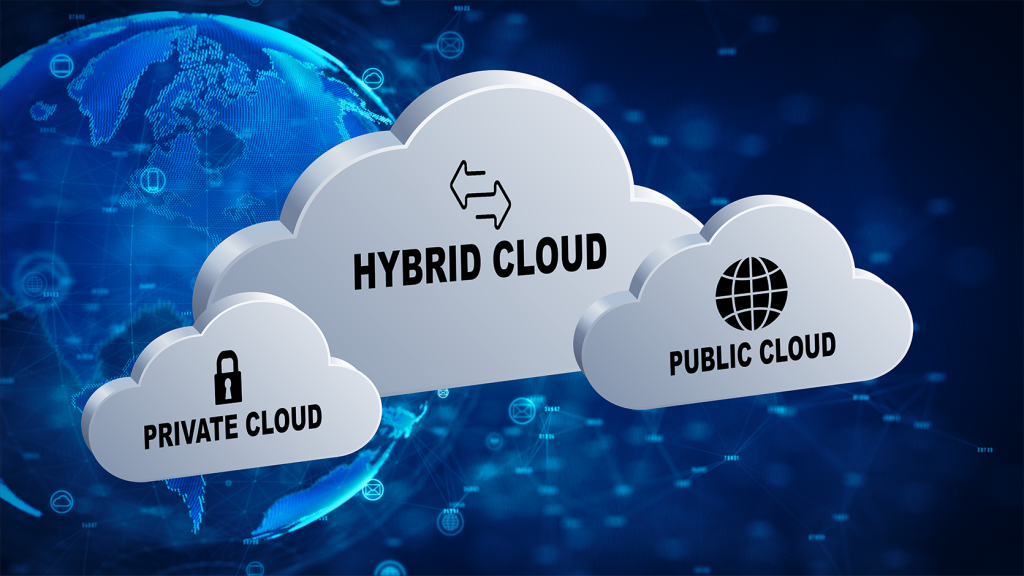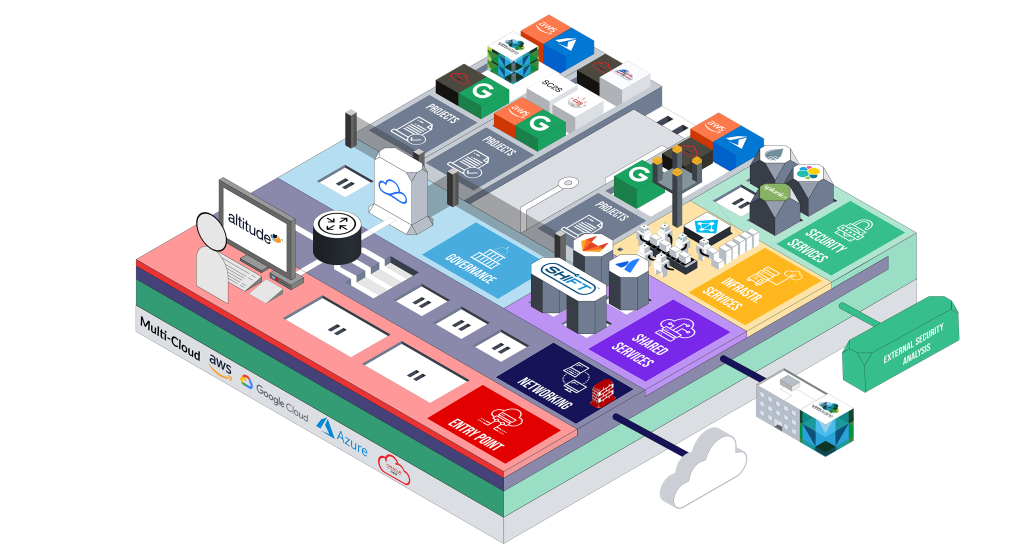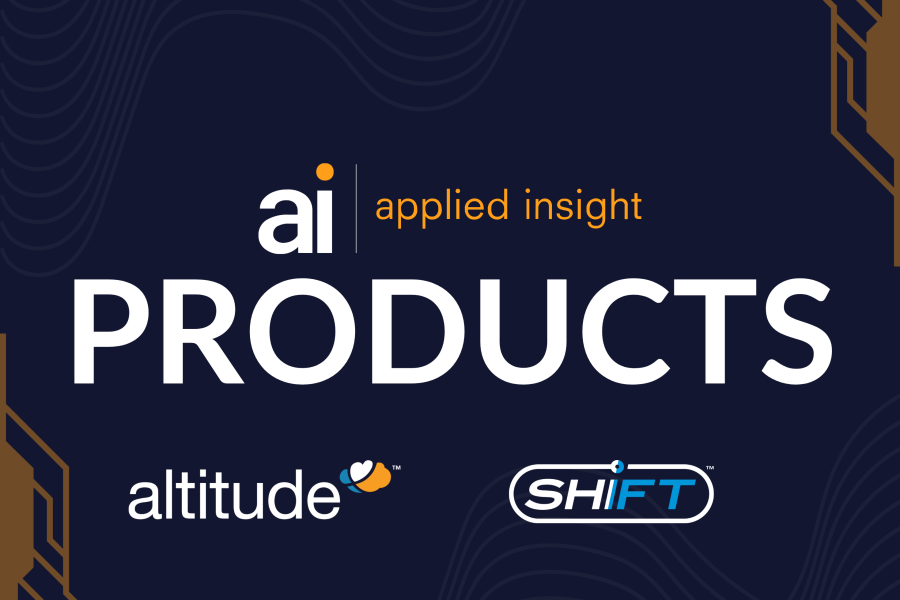Read on Applied Insight.
In today’s rapidly evolving technology landscape, the Department of the Air Force (DAF) faces numerous challenges that demand innovative solutions. With a focus on data management, security, operational efficiency, and mission readiness, the DAF requires a robust, flexible, and secure IT infrastructure. Applied Insight, a leader in advanced cloud, cyber security and analytics solutions, utilizes leverages cutting-edge products like Altitude™ and SHIFT™ to deliver secure multi-cloud/hybrid cloud architectures that provide the agility and resilience necessary for modern defense operations.

The Need for Advanced Cloud Solutions
Data is a strategic asset for the DAF, and the ability to process, analyze, and act on vast amounts of information in real-time is crucial. Traditional IT infrastructures often fall short of meeting modern data processing demands due to their inflexibility, high costs, and complex security management.
Public Cloud providers like AWS and Azure enable customers to rapidly scale resources and leverage cutting edge capabilities such as High-Performance Computing (HPC) and AI/ML. However, with the fast rate of innovation among cloud service providers and constantly evolving mission requirements, achieving decisive cloud dominance in great power competition often requires the use of more sophisticated network topologies.
Leveraging multiple cloud providers enhances mission agility by providing access to the best capabilities for each mission. Utilizing cloud technologies in conjunction with on-premises infrastructure can strengthen data security at rest while taking advantage of the scalability and advanced computation services of the cloud. Advanced cloud solutions that integrate multi-cloud and hybrid cloud architectures offer the best of both worlds by combining scalability, cost-efficiency, and flexibility with enhanced security and control, making them essential for the DAF’s operations.
Understanding Single, Multi, and Hybrid Cloud
Cloud architectures can be implemented using three different network configurations:
• Single Cloud: Relies exclusively on a single public cloud service provider.
• Multi-Cloud: Utilizes multiple public cloud services from different providers.
• Hybrid Cloud: Integrates on-premises infrastructure with public cloud services for a cohesive and flexible environment.
Strategic Advantages of Multi-Cloud and Hybrid Cloud
These architectures provide the DAF with several key benefits:
Scalability and Flexibility
Leveraging both multi-cloud and hybrid cloud enables the DAF to rapidly scale resources up and down to meet mission requirements.
• Use-Case: Dynamic Mission Support.
• Solution: Altitude™ and SHIFT™ provide centralized control, automated scaling, efficient migration, and post-migration support to adapt quickly to changing mission requirements, ensuring resource availability without over-provisioning.
Cost Optimization
Leveraging both multi-cloud and hybrid cloud enable the DAF to optimize costs by transferring mission workloads as needed, dynamically optimizing between performance and cost, and reducing waste from unutilized resources.
• Use-Case: Budget-Conscious Cloud Operations.
• Solution: Altitude™ offers centralized cost monitoring, automated workflows, compliance management, efficient migration, and risk mitigation to optimize cloud spending and ensure cost-effective operations.
Example: Choosing Multi-Cloud vs. Hybrid Cloud
Scenario: The Department of the Air Force is considering the best approach to modernize its IT infrastructure to support a wide range of mission-critical applications, including communications, intelligence, and command and control systems. The decision hinges on choosing between a multi-cloud strategy and a hybrid cloud strategy.
Multi-Cloud Approach
Reason: The Department of the Air Force operates globally, requiring high availability and redundancy for its IT systems to ensure mission success in various operational theaters. Utilizing a multi-cloud approach allows the Air Force to distribute workloads and data across multiple cloud service providers, mitigating the risk of service disruption due to vendor-specific outages or failures.
Strategic Advantage: A multi-cloud architecture enhances resilience and operational continuity by enabling the Air Force to leverage the strengths of different cloud providers. In the event of a service interruption with one provider, the department can rapidly shift workloads to another provider without impacting critical operations. Additionally, a multi-cloud approach allows the Air Force to meet diverse compliance and security requirements across different jurisdictions, including NATO and allied nations, by utilizing local cloud providers where necessary.
Hybrid Cloud Approach
Reason: The Department of Defense (DoD) has issued guidance emphasizing the need for flexibility, security, and control in cloud adoption. A hybrid cloud strategy aligns with the DoD’s emphasis on maintaining control over sensitive data and mission-critical applications while leveraging the scalability and cost benefits of the public cloud.
Strategic Advantage: A hybrid cloud strategy allows the Air Force to extend its existing on-premises infrastructure to the cloud, maintaining control over highly sensitive data and systems that are crucial to national security. This approach also provides the flexibility to use public cloud resources for non-sensitive workloads, enabling the department to scale operations as needed. Furthermore, a hybrid cloud environment supports the integration of legacy systems with modern cloud-native applications, ensuring continuity of operations during the transition to a more modern IT infrastructure.
Conclusion: The Department of the Air Force must carefully weigh the benefits of multi-cloud resilience and global reach against the control and flexibility offered by a hybrid cloud strategy. The decision will likely depend on the specific operational needs, security requirements, and long-term strategic goals of the department.

Applied Insight’s Support for Special Access Programs (SAPs)
A SAP is a classified U.S. government initiative that protects highly sensitive information with strict access controls and enhanced security measures. SAPs follow rigorous protocols and regulations to safeguard national security interests.
Altitude™ is a flexible, scalable and rapidly deployable infrastructure platform that supports Special Access Programs (SAPs) by providing stringent security and compliance. It offers robust governance and adheres to standards like NIST, CMMC, and Zero Trust, all while maintaining a seamless user experience.
Customer Use Case
Scenario: A defense customer wants to share information and resources across classified regions for a SAP Program for Large-scale real time AI/ML Processing.
Solution: Using Altitude™, the customer has a true multi-tenant platform that provides logical segmentation of tenant workloads while leveraging and advanced Zero Trust architecture that meets the enhanced security measures required by the Program.
Benefit: Accelerated ATO attainment for mission workloads and increased operational freedom and agility for mission teams all while providing stringent security compliance, increased financial governance and transparency
Applied Insight’s support of Special Access Programs, leveraging Altitude™ and SHIFT™, provides the DAF solutions to enhance operational efficiency, ensure data security, and maintain mission readiness.
Leveraging Altitude™ and SHIFT™, Applied Insight can provide the DAF with a secure compliant infrastructure and tools to support SAP programs in the cloud.
Conclusion
The DAF’s complex challenges necessitate innovative, flexible, and secure solutions. Applied Insight’s multi-cloud/hybrid cloud architectures, powered by Altitude™ and SHIFT™, provide the DAF with the necessary tools to enhance operational efficiency, ensure data security, and maintain mission readiness while meeting the most stringent SAP requirements. Leveraging these advanced technologies, the DAF can confidently navigate the future, staying ahead of evolving threats and maintaining its strategic advantage.
